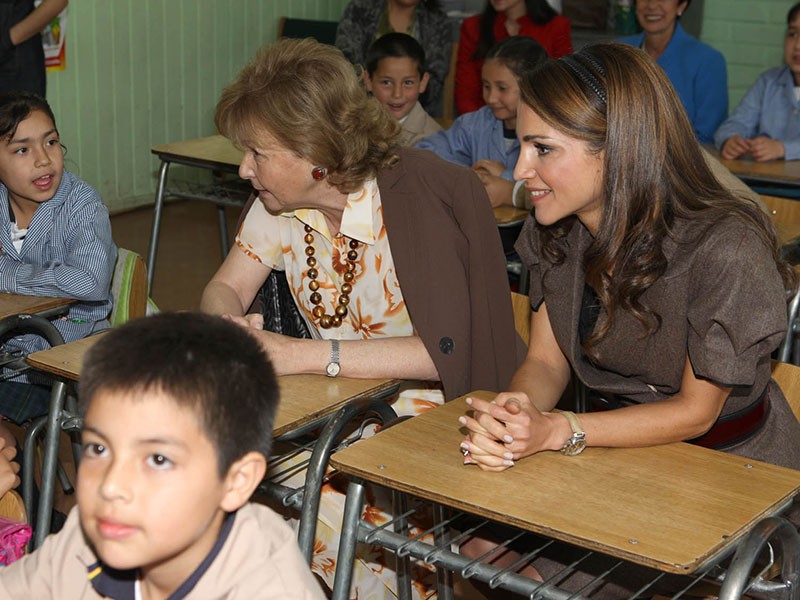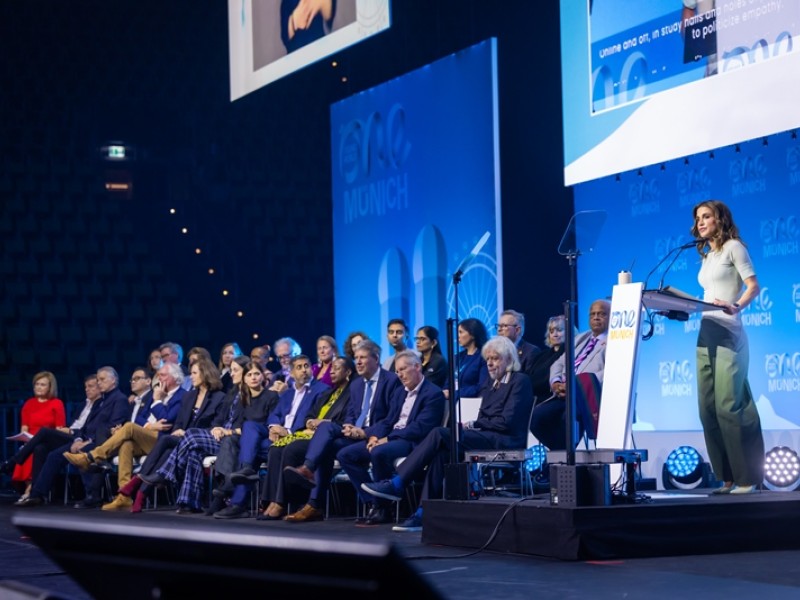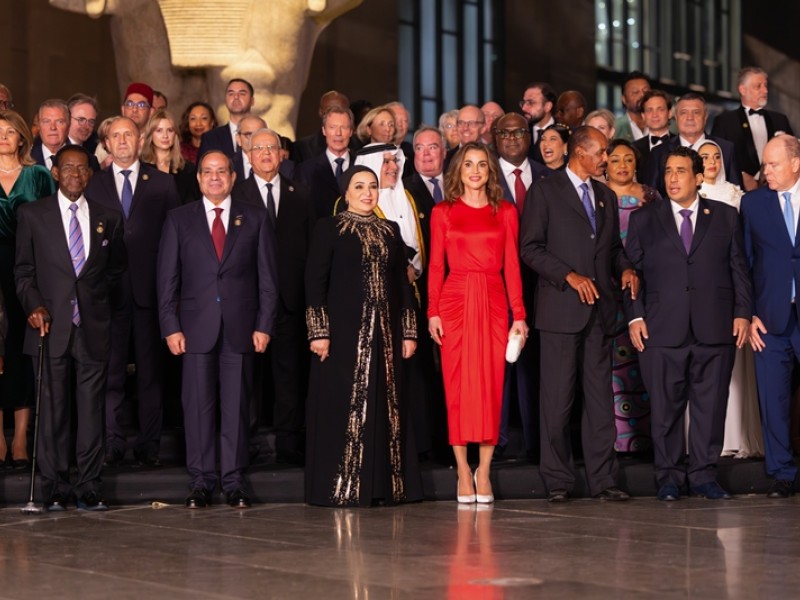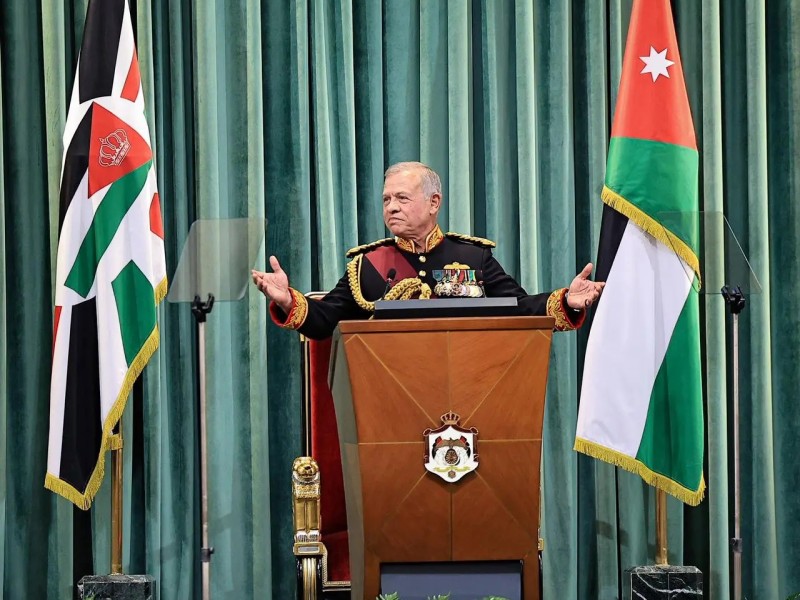Their Majesties King Abdullah II and Queen Rania Visit Chile

(Office of Her Majesty, Press Department - Santiago) Her Majesty Queen Rania Al Abdullah, an advocate for increasing access to quality education around the world, spent the afternoon exploring Chile’s groundbreaking programs as the country proves its commitment to improving the standards of education, Tuesday.
Visiting the Escuela B?sica El Salitre School, which serves one of the most underprivileged communities in Santiago, Queen Rania was eager to hear about how the government has committed itself to education reform across the country.
According to Minister of Education Monica Jimenz, the ministry is the largest in Chile. In recent years it has achieved its goal of universal access to primary education and is now concentrating on raising the quality of education and investing in building the capacity of teachers.
Applauding the ministry’s role in concentrating on teachers, Queen Rania said “teachers are a critical factor in the educational process. They are the key that unlocks students’ potential.” Her Majesty noted that Jordan shares a similar commitment to investing in teachers because they are central to the learning process.
During her time at the school, where she was joined by Princess Noor Hamzah, Queen Rania met with Mar?a Eugenia Hirmas, Director of Social and Cultural Affairs of the Presidency of the Republic; Didier de Saint Pierre, Executive Director of ENLACES; and Liliana Ponce, the school’s principal. Her Majesty was briefed on the ENLACES program, which concentrates on providing these schools with technology. Having successfully completed phase one of equipping all their public schools with the technological infrastructure, ENLACES will now focus on using the technology to improve the learning environment for the student.
Her Majesty spent time in a third grade classroom to observe the ENLACES program first hand as they used technology tools to focus on the language lesson of the day. The program, which focuses on language, science and math, aims to motivate students to learn in a more interactive style and to give teachers multiple resources to address the learning styles of different students. Beyond concentrating only on providing technology, ENLACES programs want to the technology to become part of the curriculum and teaching tools.
Speaking about similar experiences in Jordan with the Jordan Educational Initiative, the Queen noted that “the challenge isn’t just putting technology in the classroom but using that technology to transform the learning experience of students.”
The Queen also shared some anecdotes about recent partnerships between the public and private sector as they work together in Jordan to improve the quality of education as she heard about the ministry’s plans to tap into private sector expertise and experience as part of their capacity building plans.
She then toured the rest of the school and enjoyed a performance by the students.
Queen Rania and Princess Noor also spent some time at the Interactive Museum Mirador (IMM), Monday. The Queen, who herself established the Children’s Museum of Jordan three years ago, said she was very interested in touring the facility to see some of the latest interactive tools that they use and learn more about the teacher training at the facility.
With over 300 exhibitions in more than a dozen rooms, the IMM focuses on making science, art and technologies available and digestible to its young patrons. The museum also owns a travelling exhibition that takes many of the displays on tours around Chile, and boasts a teachers training program that provides non-formal and non-traditional educational perspectives to improve the quality and equity of instruction on science and technology.
Queen Rania was briefed on the museum’s programs, and discussed sharing this experience and collaboration with the Children’s Museum of Jordan.
Established by former First Lady Marta Larraechea de Frei in 2000, the museum hosts nearly half a million visitors each year. It is funded by both the government and private donations.
Featured
Queen Rania's official website
This website does not support old browsers. To view this website, Please upgrade your browser to IE 9 or greater
Your browser is out of date. It has known security flaws and may not display all features of this and other websites. Learn how to update your browser



